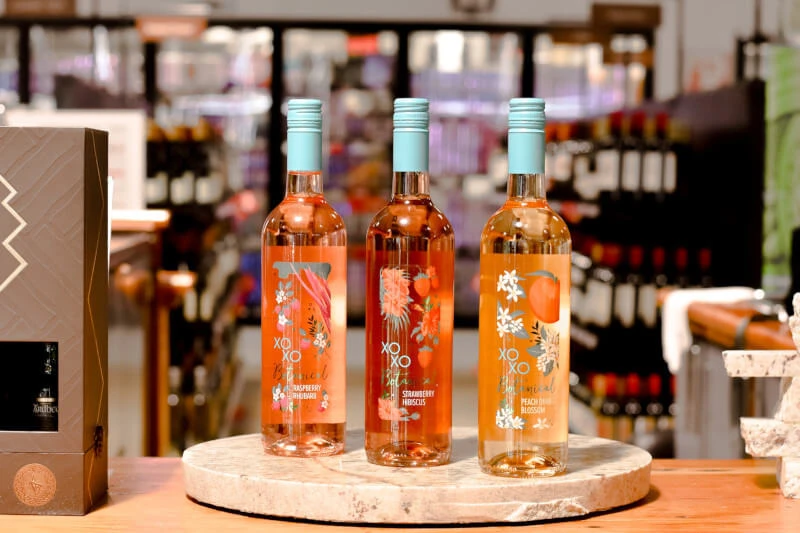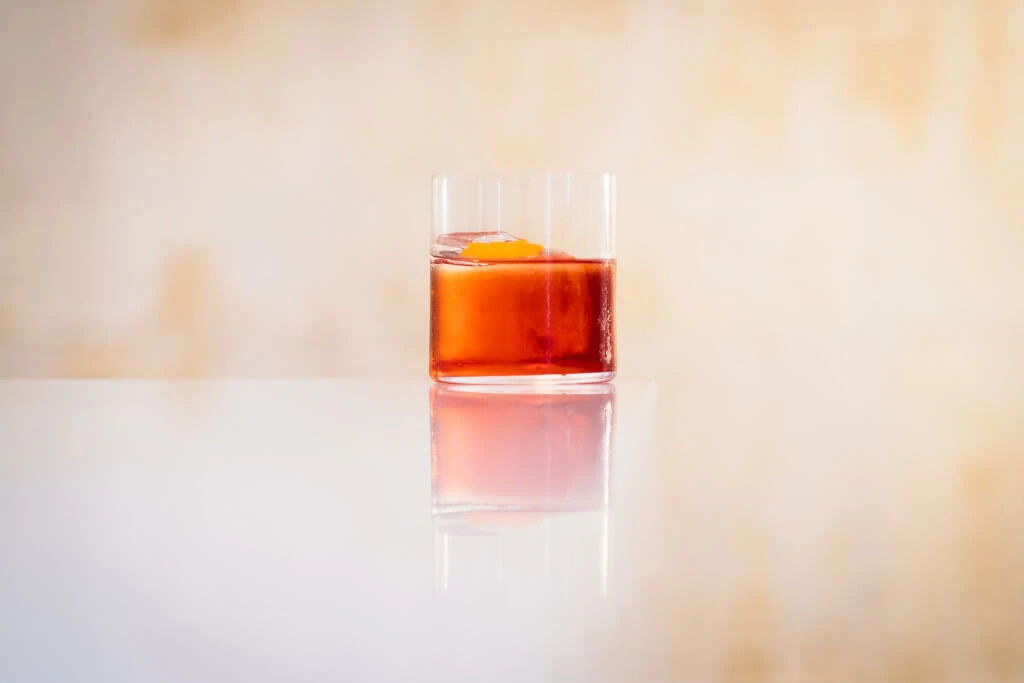Vermouth has long enjoyed its place in the annals of classic cocktail culture, making star appearances in favorites like the Martini and the Manhattan. What is less known, however, is the intricate history and multifaceted nature of this fortified wine. By delving into the complexities of vermouth, we can better appreciate its nuances and place in our glasses.
Origin and Essence of Vermouth
Vermouth, at its core, is a fortified wine. What sets it apart from other wines is its infusion of aromatic ingredients: herbs, barks, and citrus peels. Once these ingredients have infused their essence into the wine, additional alcohol is introduced. This serves a dual purpose: halting any further fermentation and ensuring a longer shelf life for the vermouth.
A bit of trivia here – the term “vermouth” owes its origin to the German term “vermut”. This is a nod to the bitter wormwood herb, which is a mandatory inclusion in the traditional vermouth recipe. While wormwood remains a consistent component, other ingredients like chinchóna, gentian root, baking spices, and thyme can vary widely depending on the producer’s unique recipe. As Jake Parrott, portfolio manager for importer Haus Alpenz mentions, “The reddish hue of most sweet vermouths comes from caramelized sugar or caramel coloring, even though most vermouths have a white wine base.”
Regulations and Recognitions
If you’re sipping vermouth in the European Union, there’s a specific set of regulations the drink adheres to. It mandates that the vermouth contains at least 75% wine and boasts alcohol by volume (ABV) of between 14.5-20%. As for our American readers, the classification for vermouth is slightly broader. Over there, it’s classified as an aperitif wine that’s bolstered with a stronger spirit and should be bottled at a minimum of 15% ABV.
Vermouth Varieties
The world of vermouth is diverse. Each variety boasts a unique character, making it crucial to understand the differences:
1. Dry Vermouth: As Will Wyatt, owner of New York City’s Mister Paradise, outlines, the overall profile of dry vermouth hints at “baking spice and floral botanicals.” In the European Union, there’s a cap of 50 grams of sugar per liter for dry vermouth. An even drier version, the extra dry vermouth, permits only up to 30 grams of sugar per liter.
For those seeking bottle suggestions, consider Dolin Vermouth de Chambéry Dry or Noilly Prat Extra Dry Vermouth.
2. Blanc/Blanco/Bianco Vermouth: This semi-sweet variant has become a darling for Martini enthusiasts. While the European Union categorizes it as semi-dry with a sugar content between 50 and 90 grams per liter, many modern blanc vermouths tilt towards the sweeter side. Wyatt mentions that Blanc vermouths can be “more rounded out” and might showcase “less intensity” than the super-dry types due to the introduction of vanilla or honey-like aromas.
3. Vermouth d’Asti or Sweet Vermouth: This variant, frequently used in classics like the Manhattan and Negroni, carries a dark hue and a diverse flavor palette ranging from earthy and fruity to herbal and spicy. The coloring, interestingly, comes from caramelized sugar or caramel coloring, even if the base is white wine. In terms of sugar content, the European Union dictates it should have a minimum of 130 grams per liter.
Vermouth Styles, by Region

Distinct regions across Europe have given birth to their styles of vermouth:
Torino
The grapes of the Italian Piedmont area, especially the Moscato, are honored in the robust and somewhat sweet Vermouth di Torino. The use of this phrase is now legally safeguarded by a GI. Vermouth from the Torino region of Italy must begin with a wine from the Piedmont region. They come in a variety of scarlet hues and varying degrees of sweetness.
Chambéry
Chambéry’s light wines, across the Alps in France, become low-sugar blanc vermouths that are flowery and subtle. Dolin created this fashion in early 19th-century southern France. Beginning in the 1930s, Vermouth de Chambéry enjoyed its appellation, but today, that status has been removed. Chambéry-labeled bottles today typically contain Dolin and come in blanc, dry, and rouge varieties.
Reus
This style of vermouth emerged in Catalonia, Spain in the late 1800s as a response to the Phylloxera plague, which ravaged European vineyards. Today, it is enjoying a second rebirth. There are also dry (Blanco) and sweet (Rojo) versions available.
Marseilles
Noilly Prat is a type of dry vermouth that originated in Marseille, France; it is more oxidized than other types of vermouth since the wine barrels used to mature it spent at least some of the year in the sunlight. Despite having gained fame as a dry vermouth, Noilly Prat now also produces ambré and rouge varieties.
Jerez
Vermut de Jerez is a type of Spanish liqueur often produced with either amontillado or oloroso sherry, and it takes its name from the city of Jerez in the Andalucia region of the country. Jerez has been making vermouth since the 1800s, but the style has only recently seen a resurgence thanks to the efforts of sherry maker Lustau, which has released vermouth variants.
A Replacement for Vermouth
These aren’t the only kinds of vermouth, but they make up the vast majority of what you’ll find in bottles at the supermarket. Understand that vermouth is just one type of aromatized wine; there is a large range of others. Americanos (like Cocchi Americano), quinquinas (like Dubonnet), and vino amaros (“wine amaros,” like Cardamaro) are all examples of such beverages.
What Are Aromatized Wines?

Aromatized wines are wines that have been infused with botanicals, such as herbs, spices, flowers, and fruits, to enhance their flavor profile. These botanicals not only provide additional aromas but also introduce a layer of complexity and depth to the wine. After the infusion process, these wines are fortified, meaning additional alcohol, typically from a distilled spirit, is added to increase the wine’s alcohol content and stabilize its flavors.
Let’s look into the aromatized wine examples we mentioned earlier in the article:
1. Americanos: This type of aromatized wine finds its roots in Italy. The primary characteristic of an Americano is its pronounced bitterness, often derived from the gentian root. A popular example of this type is Cocchi Americano. It’s worth noting that despite the name “Americano,” this wine has no direct connection to the Americas. It offers a pleasant balance of sweetness and bitterness and is frequently enjoyed as an aperitif.
2. Quinquinas: This is an aromatized wine category where quinine (a compound derived from cinchona bark) is the primary flavoring agent. The presence of quinine provides a distinct bitter flavor, which is balanced by the inherent sweetness of the wine. Dubonnet is a renowned example of a quinquina. Historically, quinine was used to treat malaria, which gave rise to quinquinas being consumed for medicinal purposes. Today, they are appreciated for their unique taste profile and are often enjoyed on their own or in mixed drinks.
3. Vino Amaros: Translated as “wine amaros,” these are aromatized wines that lean heavily on the bitter side. The term “amaro” is Italian for bitter, reflecting the wine’s flavor profile. A known example in this category is Cardamaro. Unlike traditional amaros, which are distilled spirits, vino amaros are wine-based. They present a harmony of sweet and bitter flavors, with herbaceous and sometimes citrusy notes. Vino amaros can be sipped neat, on the rocks, or used as a component in cocktails.
Beyond Vermouth
It’s essential to recognize that while vermouth is widely known, it’s just one type in a broader category of aromatized wines. This includes beverages such as Americanos, quinquinas, and vino amaros.
In closing, vermouth is more than just a cocktail ingredient; it’s a realm of its own, boasting history, variety, and a plethora of flavors. Appreciating its depths allows us to craft better drinks and to appreciate the craft of those who produce this intriguing fortified wine.

